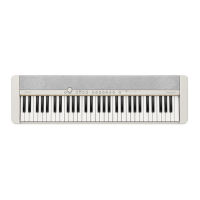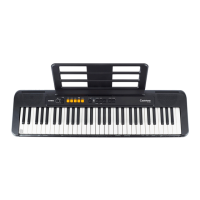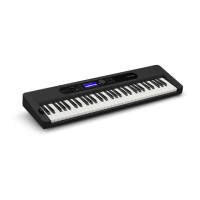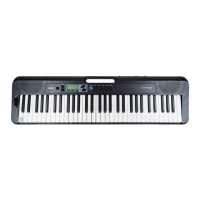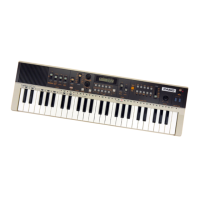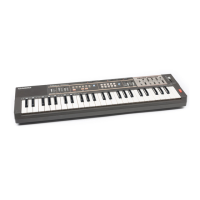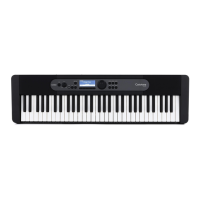EN-156
You can use the procedures in this section to record your keyboard play for later playback.
There are two ways to record: Easy Recording, which simplifies recording of your performances, and
Multi-track Recording, which lets you overdub record performances.
Your recordings can be saved to Song Bank locations 11 through 17 (Tone Recordings: 11, Rhythm
Recording: 12, Multi-track Recording: 13 to 17).
■ Easy Recording
For Easy Recording, you can specify Tone Recording, and Rhythm Recording.
• You can use the tone screen to save a recorded performance as a Tone Recording.
• You can use the rhythm screen to save a recorded performance as a Rhythm Recording.
■ Multi-track Recording
A Multi-track Recording consists of a single system track to which a performance that uses layer, split,
and rhythm function can be recorded, and five solo tracks for recording with the UPPER1 part.
• There is memory for up to five multi-track recordings.
Also, you can copy a Tone Recording and Rhythm Recording as a Multi-track Recording (page
EN-162).
■ Recorded Information
The recorder records information about the operations of the functions listed below.
– Keyboard play
– Pitch Bend Wheel
– Tone
– Touch Response
– Pedal*
1
– Knob*
1
– Sustain
– Portamento
– Layer*
2
– Split*
2
– Balance
– Active DSP*
3
– Octave shift
– System Effects*
2
(Reverb, Chorus, Delay)
– Scale Tuning*
2
– Arpeggiator
– Auto Harmonize*
2
– Tempo*
2
– Rhythm*
2
– Registration*
2
– Recording settings beat*
2
*1 Some assigned functions cannot be recorded.
*2 Cannot be recorded to the solo track.
*3 Using Active DSP with multiple tracks may remove tone effects and change the timbre of the tone.
• The Multi-track Recording solo track does not record UPPER2 part and LOWER part operations.
Recording Your Keyboard Play

